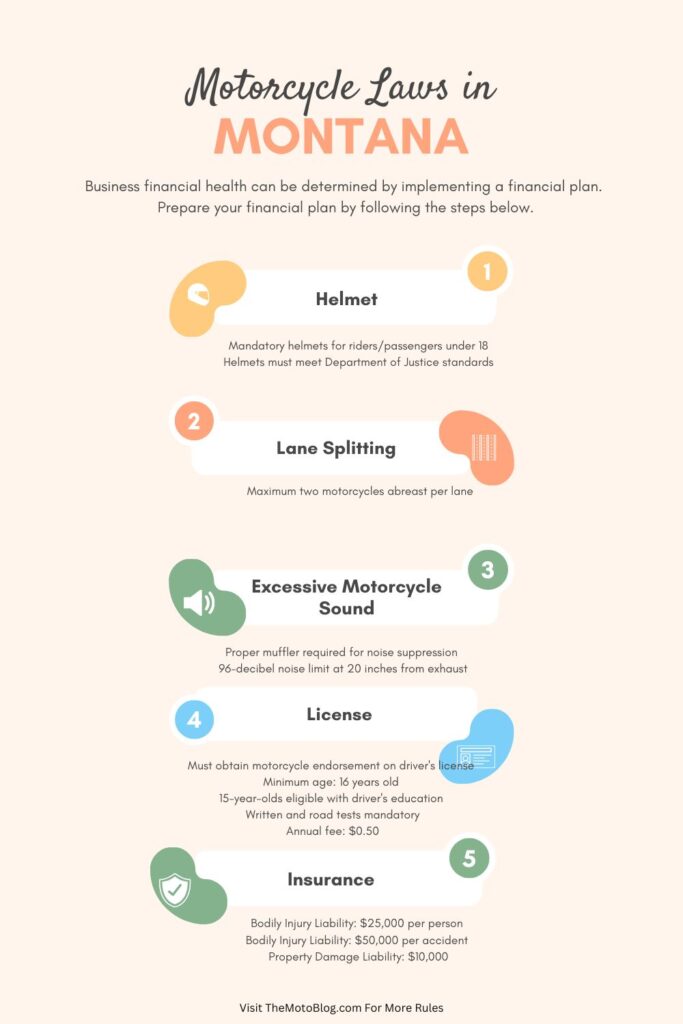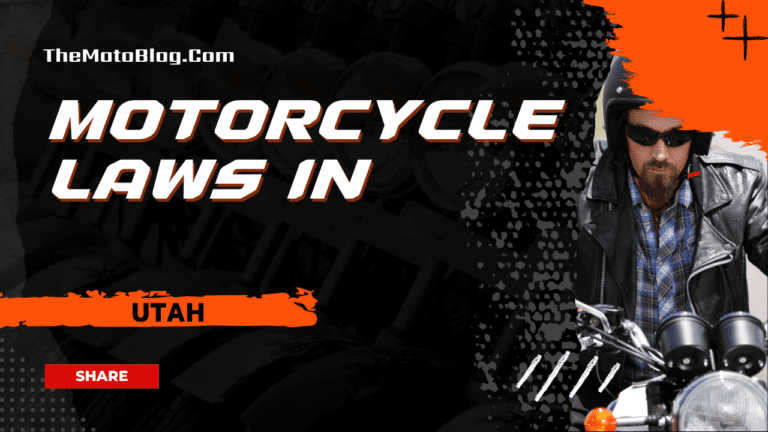Motorcycle Laws in Montana: A Comprehensive Guide for Riders
Montana’s rugged landscapes attract motorcyclists from across the nation, offering breathtaking rides from the Idaho border to the Wyoming state line. Whether you’re a local rider or a touring enthusiast, understanding Montana’s motorcycle laws is crucial for safe and legal exploration of the Treasure State. From helmet requirements to vehicle specifications, these regulations protect riders while preserving the freedom of the open road.

| Category & Rules | Specific Requirements |
|---|---|
| Licensing | • Must obtain motorcycle endorsement on driver’s license • Minimum age: 16 years old • 15-year-olds eligible with driver’s education • Written and road tests mandatory • Annual fee: $0.50 • Road test waiver available with safety course completion |
| Helmet and Safety Equipment | • Mandatory helmets for riders/passengers under 18 • Helmets must meet Department of Justice standards • No mandatory eye protection requirements |
| Operating Rules | • Headlights must remain on at all times • Maximum two motorcycles abreast per lane • Headlamp visible for 500 feet • Brake light visible for 100 feet in daylight • Reflector and tail light visible for 500 feet • Rearview mirror showing 200 feet behind • At least one foot or hand brake • Horn audible for 200 feet |
| Insurance Coverage | • Bodily Injury Liability: $25,000 per person • Bodily Injury Liability: $50,000 per accident • Property Damage Liability: $10,000 |
| Vehicle Specifications | • Proper muffler required for noise suppression • 96-decibel noise limit at 20 inches from exhaust • License plate light mandatory |
| Passenger Regulations | • No specific age restrictions for passengers • Must have dedicated passenger seat • Must have footrests for passengers |
| Registration Requirements | • At-fault system for accidents • Must show proof of insurance before registration |
| Traffic Laws | • Speed limits vary by location • National parks have specific speed restrictions • Maximum 45 mph in Glacier National Park |
| Legal Timeframes | • 3-year statute of limitations for accident claims |
| Special Circumstances | • Mopeds (2 brake horsepower or less, 30 mph max speed) exempt from helmet requirements |
Licensing Requirements
To legally operate a motorcycle in Montana, riders must obtain proper licensing and meet specific requirements. The state maintains strict standards to ensure rider competency and road safety.
Age and Endorsement Requirements
- Minimum age requirement is 16 years old
- 15-year-olds may apply after completing a driver’s education course
- Motorcycle endorsement mandatory on driver’s license
- Written and road tests required
- Annual fee of $0.50
- Road test waiver available upon completion of motorcycle safety course
Helmet and Safety Equipment Laws
Montana takes a balanced approach to helmet laws, focusing on protecting younger riders while allowing adults to make their own safety choices.
Helmet Requirements
- Mandatory helmet use for riders and passengers under 18
- All helmets must meet Department of Justice standards
- No mandatory eye protection requirements
Operating Rules and Regulations
Lighting and Equipment Requirements
- Headlights must remain on at all times
- Motorcycles limited to riding two abreast per lane
- Required equipment includes:
- Headlamp visible for 500 feet
- Brake light visible for 100 feet in daylight
- Reflector and tail light visible for 500 feet
- Rearview mirror showing 200 feet behind
- At least one foot or hand brake
- Horn audible for 200 feet
Insurance Requirements
While Montana maintains relatively flexible insurance requirements, riders should consider comprehensive coverage for optimal protection.
Recommended Coverage
- Bodily Injury Liability: $25,000 per person
- Bodily Injury Liability: $50,000 per accident
- Property Damage Liability: $10,000
Vehicle Specifications
Noise and Equipment Standards
- Proper muffler required for noise suppression
- 96-decibel noise limit at 20 inches from exhaust
- License plate light mandatory
Passenger Laws
Montana’s passenger regulations focus on safety equipment rather than age restrictions:
- No specific age restrictions
- Dedicated passenger seat required
- Mandatory passenger footrests
Registration and Documentation
Montana operates under an at-fault system:
- At-fault parties responsible for injuries and damages
- Insurance proof required for registration
Traffic Laws and Road Rules
Speed and Location Restrictions
- Speed limits vary by location
- Special restrictions in national parks
- Maximum 45 mph in Glacier National Park
Penalties and Enforcement
Legal Timeframes
- 3-year statute of limitations for accident claims
Special Circumstances
Moped Regulations
Mopeds (2 brake horsepower or less, maximum unassisted speed of 30 mph) exempt from helmet requirements
As your journey extends beyond Montana’s borders, remember that each state has unique motorcycle regulations. Riders venturing into North Dakota or South Dakota should review local laws to ensure compliance. Understanding these regional differences helps create a safer riding experience while exploring the diverse landscapes of the American Northwest.
Motorcycle Laws in the US By States
If you liked this article, then please subscribe to our YouTube Channel for more Bike Videos. You can also find us on Instagram, Twitter and Facebook.
Disclosure: As an Amazon Associate, I earn from qualifying purchases. Read more about Amazon Affiliate Disclaimer.

Vishwanath Mathpati
I am Vishwanath Mathpati, a full-time Blogger and Motorcyclist from Bidar, Karnataka. I love writing about my Motorcycles Stories and Riding Gears on this blog.
Know More About Me.







